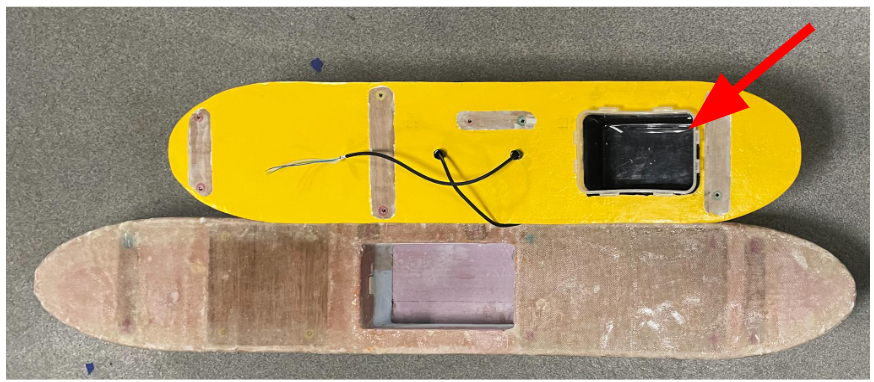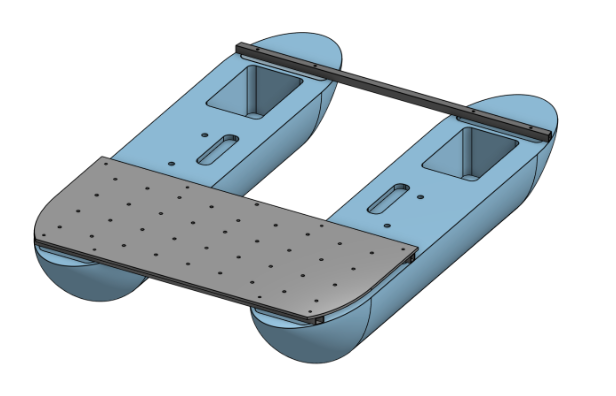Our new vehicle, Fish ‘N Ships, features a catamaran design due to its stability and low drag characteristics. In the initial design, we placed the battery boxes within the hulls to lower the center of mass, decided on ammo boxes to store the batteries for fireproofing, and used foam as the main material of the hulls since it would be less likely to sink if the hulls were punctured. However, the final product turned out to be 36 lbs, which was much higher than we expected, since we were trying to keep the overall weight of the vehicle under 70 lbs.

Fig 1. The top hull is our new one, and the bottom is the old design. The arrow indicates the cavity that holds the battery box.
Thus, we began a new round of design with more specific design requirements and tried different manufacturing techniques. While we still planned on using foam and sealing it with epoxy and fiberglass, we utilized vacuum bagging technology instead of doing hand layups, since vacuum bagging can spread the epoxy more evenly across the surface, resulting in less layers (and weight) than manual techniques. We also decided to shorten the hulls to make the boat smaller, which would also help cut down the weight and make the boat easier to transport. Finally, instead of using ammo boxes, which contributed significantly to the weight, we opted for tupperware, since they worked well in waterproofing the batteries and were also very lightweight. The current hulls are only 12 lbs total. They are four feet in length, and the entire boat can be easily carried by two people.

Fig 2. CAD model of our current hull design with the deck attached.
